Over the past year and a half, the introduction of ChatGPT and other Large Language Models (LLM’s) has raised a host of societal questions around the use of AI in media, that we aim to address in our interdisciplinary research. To ensure that we are asking the right questions we work in close collaboration with our media partners, but also with other research groups that tackle similar topics. One of those groups, is the Digital Journalism Research Group (DJRG) at OsloMet University. In November 2022, we welcomed DJRG in Amsterdam to discuss our respective research practices on the topics of Platform Power and the use of AI in journalism. After this fruitful exchange, the plan arose to organize a similar research visit to the both the DJRG in Olso, and the innovative academia-media sector partnerships Media City Bergen andMediaFutures in Bergen.
With this blogpost, we explore the common challenges and best practices exchanged during our Norwegian lab study trip, which took place between March 11 and 14 of this year.
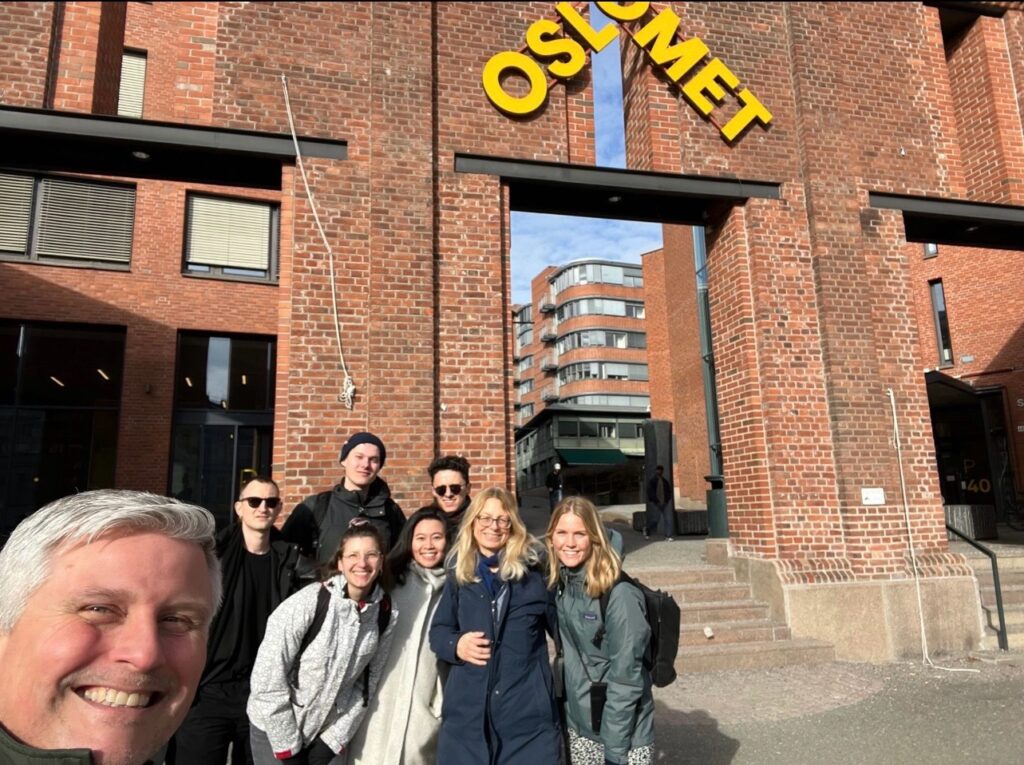
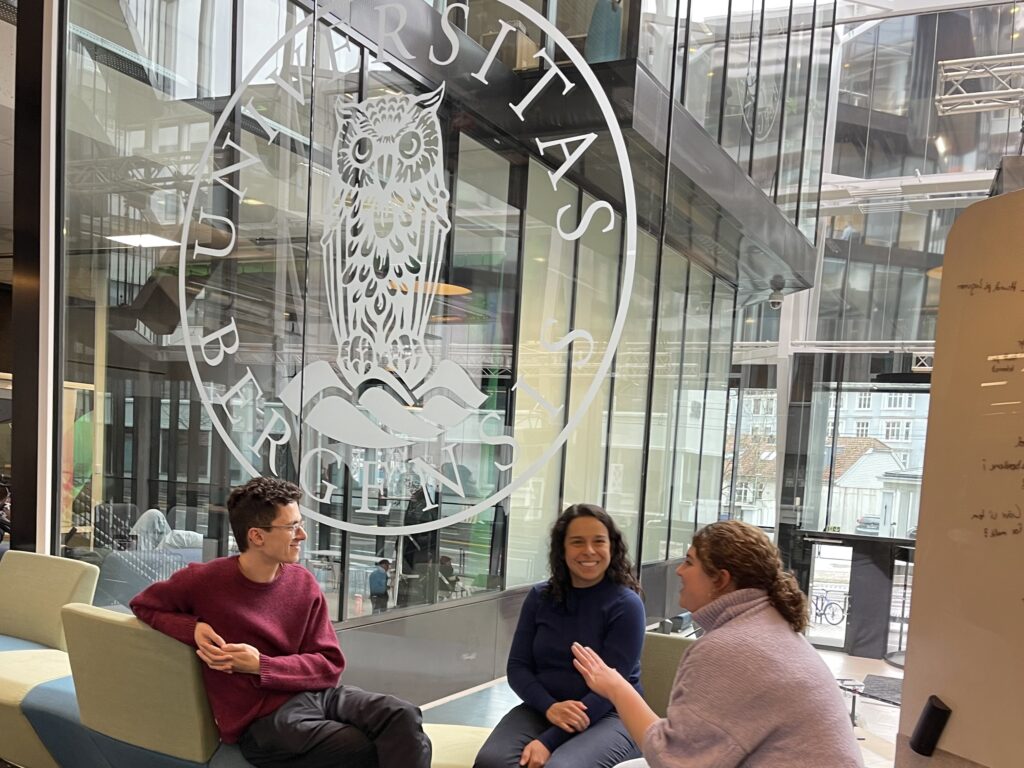
How to create the right circumstances for interdisciplinary research?
The Digital Journalism Research Group investigates what digitalization means to journalism as a profession and practice, as well as to the education of journalists. Research in this field can be seen as inherently interdisciplinary, as it brings together scholars with disciplinary expertise from fields such as journalism studies, computer science, political communication, media business, media management, law, sociology, and so forth. Digital journalism studies is truly an interdisciplinary field, so argues DJRG co-lead Oscar Westlund.
To no surprise, we discussed many challenges and best practices concerning interdisciplinary research during our visit, for example, how to ensure that researchers from different disciplines speak the same language and understand each other’s conceptualizations. Our co-directors Natali Helberger and Claes de Vreese shared some best practices from their ten-year interdisciplinary collaboration, including organizing face-to-face meetings between disciplines to encourage direct interaction, having skilled moderators facilitate multidisciplinary dialogues, collaborating on specific concepts rather than overarching topics, and ensuring a true commitment from principal investigators to carrying out the interdisciplinary mandate.
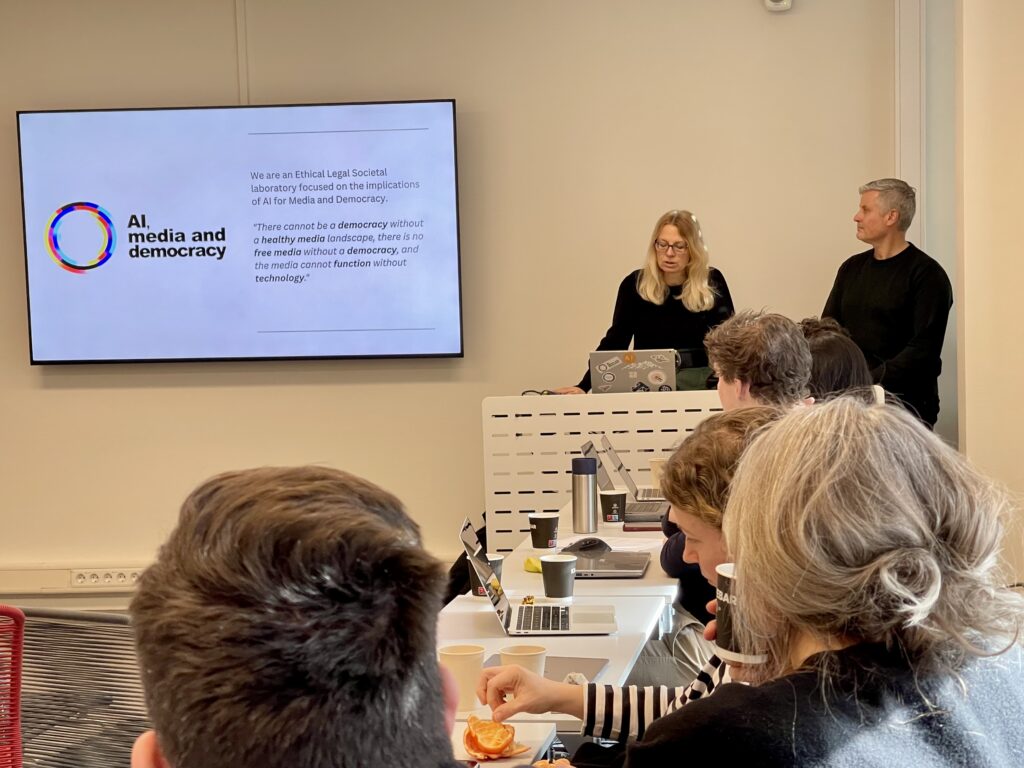
Which definition of Artificial Intelligence to choose?
Helle Sjøvaag of Stavanger University raised the question of how such a broad concept as Artificial Intelligence can be defined clearly and effectively, both in the context of our AIMD Lab, and the ten-year gravitation programme AlgoSoc. According to Claes de Vreese and Natali Helberger, the key is to adopt a context-based approach. In some cases, it’s important to strictly define AI. Other times adopting a broader definition, for example automation, is more fitting. Platform research, for example, is often typified as research into digitization, rather than research into AI. Claes’ and Natali’s plea would be to distinguish clearly between AI and digitization, instead of making narrow, technical distinctions.
How to foster fruitful collaborations between academia and media actors?
By building coalitions
Media City Bergen houses the Norwegian Media Cluster, where academia, public and private media organisations, and tech companies come together to collaborate. One initiative that is embedded in this cluster is MediaFutures, a University of Bergen-based research centre for responsible media technology and innovation. Their partners include NRK and TV 2, the two main TV broadcasters in Norway, Schibsted, and Bergens Tidende. With our involvement in research collaborations with media partners, such as BBC, DPG Media, and Bayerische Rundfunk, we certainly had a lot to learn from this innovative partnership.

By connecting investigative journalism and new AI technologies
The Artificial Investigative Journalism Resource Center (AIJRC) at OsloMet works on providing young journalists with the skillsets to work in journalism, including AI. It builds AI pipelines, which journalists then use themselves. This ensures lifelong education projects for journalists. On top of that, they also document their process as an experimental testbed. This is how they make ‘real world impact’ and scientific currency overlap: they publish about the journey.
Educating investigative journalists about the possibilities AI has to offer is also a big priority at Media City Bergen, where the The Center for Investigative Journalism (SUJO) is located. SUJO recently launched an Executive Master’s course on Technology, Artificial Intelligence, and Investigative Journalism. Earlier this year the first candidates, a group of 17 investigative journalists, have started working on practical proposals, or prototypes, on how artificial intelligence can be used in their editorial offices. As SUJO’s head of reporting Astrid Dalehaug Norheim explained, their aim is for their education on the topic of AI to lead to more efficiency in investigative journalism, and thus more effectivity in journalists performing their oversight function.
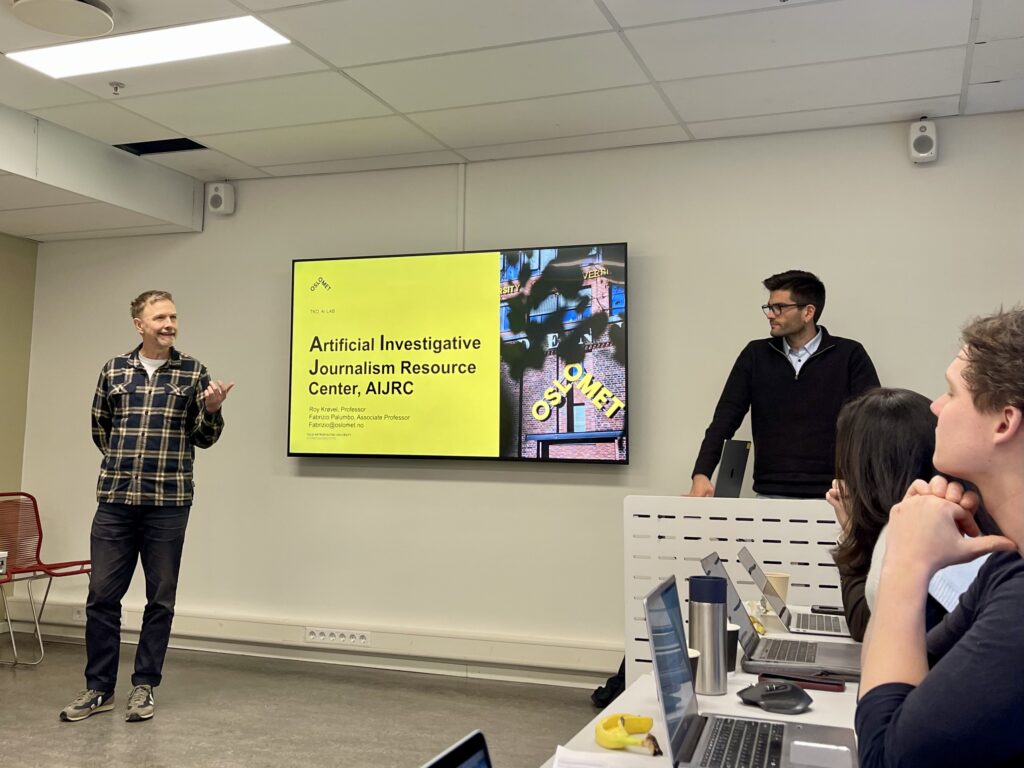
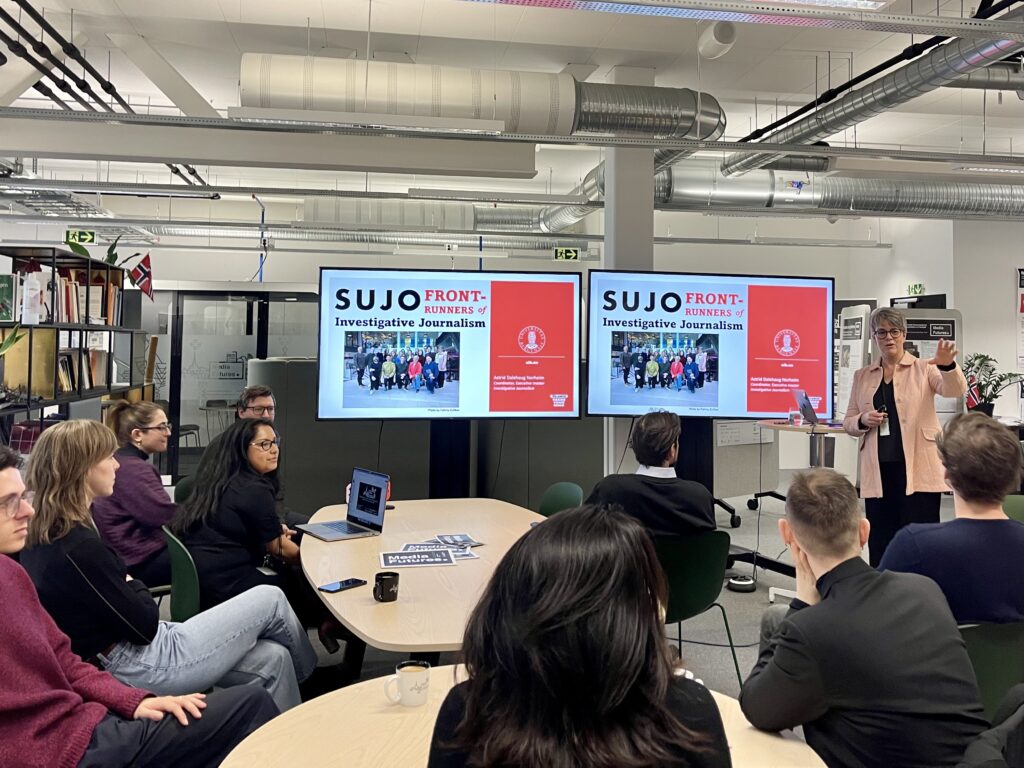
By understanding the interests and challenges of media organisations
Helle Sjøvaag introduced us to the Whiteboarding Method, an innovative and interactive approach to understand how media organizations operate. Developed for a project on Norway’s digital infrastructures, this method aims to build trust with industry partners and serves as an alternative to traditional interviews. Academics ask media organizations to visualize certain dynamics on a large whiteboard, encouraging them to go into ‘teaching mode’ by illustrating their ecosystem. Photos and notes from these sessions are then converted into figures and sent back to the media organizations for verification.
At the MediaFutures in Bergen, as Hallvard Moe explained, much emphasis is placed on aligning expectations with media partners to produce realistic outputs. Many topics of common interest, such as understanding why readers are reluctant to pay for news, have been identified over the course of the project. At the same time, researchers aim to explain these phenomena, while the media companies seek to document, measure, and map them for decision-making purposes. To address these differing end goals, compromises are made earlier rather than later. Despite differences, media organisations have shown much interest and willingness to implement the normative aspects identified by MediaFutures, into their models. Annual demo sessions, supported by information science research assistants, have proven crucial for translating research into practical applications for media partners.
How to introduce a social justice lens to AI research?
In his presentation at Pressens Hus in Oslo, “The Digital Faces of Oppression and Domination”, Laurens Naudts argued for a more nuanced perspective on the role of algorithms within relational frameworks. It’s not just about distributing items in an automated way, it’s about enhancing opportunities in people’s lives. This issue concerns everyone and requires a shift in mindset. Laurens prompted the audience to consider who holds greater value, the engineer, or the data labeler, and to then reconsider where regulatory action should be taken.
Similar questions about the distribution of opportunities arose during our visit to MediaFutures, especially from a presentation by Samia Touileb, an associate professor on Norwegian Language Technologies at the University of Bergen. In recent work, Samia focused on potentially harmful impact of Norwegian Language Models. These harms include allocational harms, meaning how certain people are allocated, or not, certain opportunities and resources, and representational harms, meaning how certain people are stigmatized or stereotyped. Together with fellow researchers, she evaluated how Norwegian language models perform normatively and descriptively. Following our visit to Bergen, our Postdoctoral researcher Zilin Lin has incorporated insights from Samia into a current collaboration with one of our media partners on the topic of diversity.
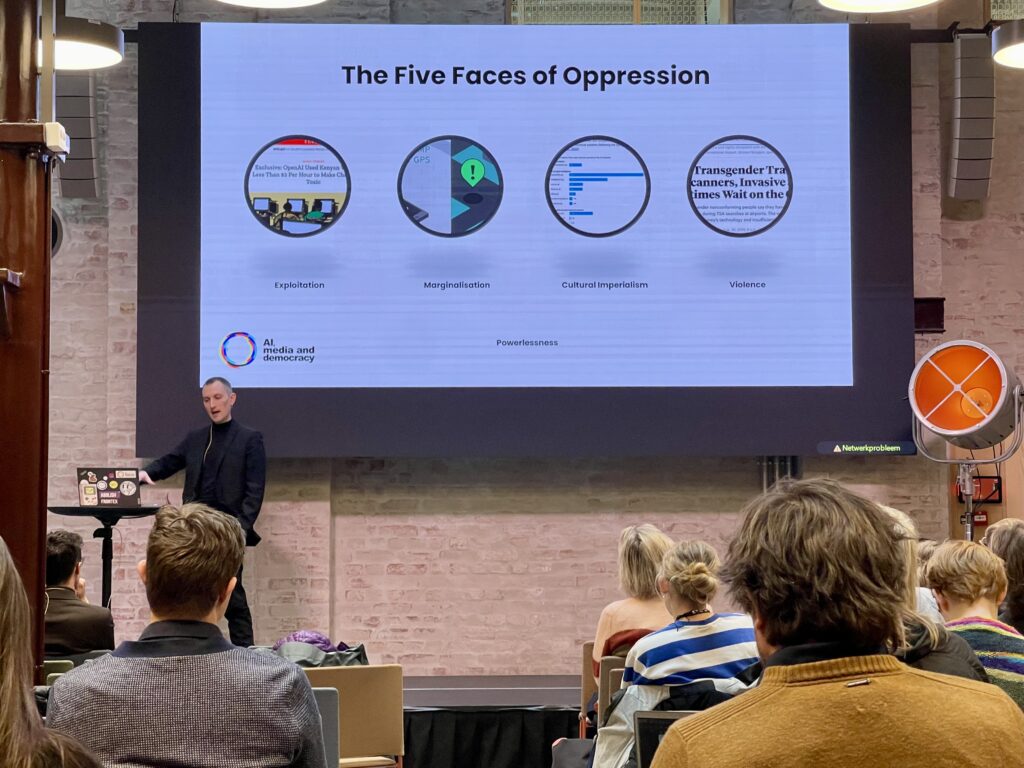
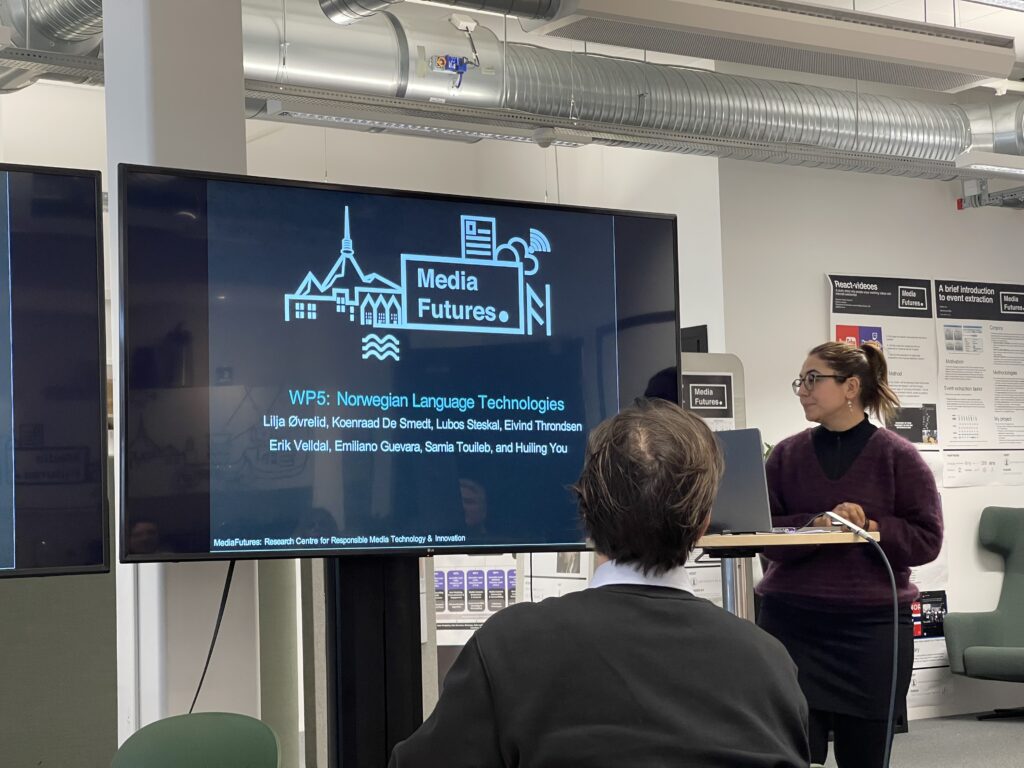
Taking the Norwegian collaboration ethos back with us
Our study visit offered a fresh perspective and allowed us to re-evaluate our Lab’s interdisciplinary and impact-oriented research agenda, thanks to the inspiring and innovative research initiatives we encountered during our stay in Norway. Aside from the topics mentioned in this blog post, we delved into many other common themes, such as incorporating user perspectives, moving beyond the black box, and considering infrastructural aspects. We returned with a renewed enthusiasm for conducting impactful research alongside our media and societal partners.

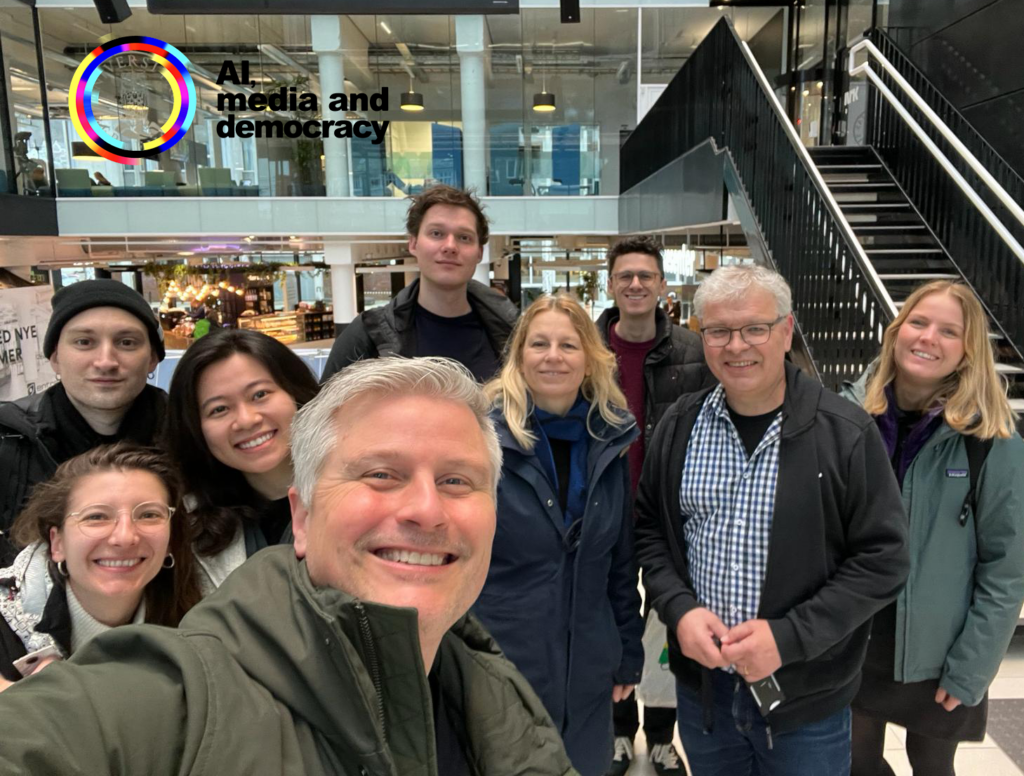
“We share whatever we can, and we compete only where we have to.”
A key takeaway from this experience is the Norwegian approach to collaboration: “We share whatever we can, and we compete only where we have to.” This ethos seems to apply not just to academia and the media industry collaborations, but to the entire innovative Norwegian media ecosystem. We have made sure to bring this collaborative spirit back with us.
